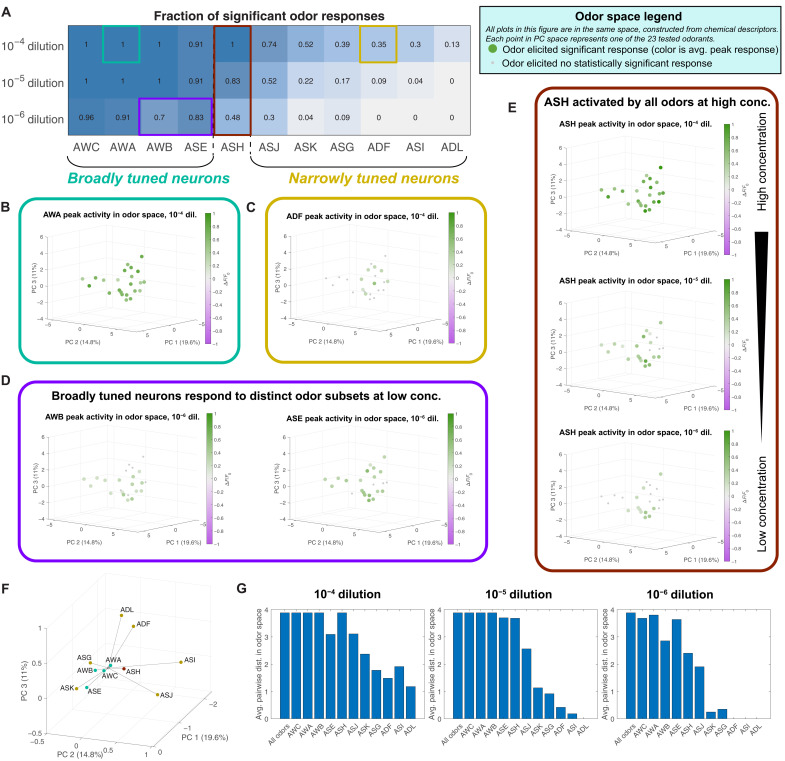Fig. 4. Chemosensory neuron tuning.
(A) Fraction of odorants in our 23-odor panel, which elicited significant responses (q ≤ 0.01) in each neuron, at three different concentrations. We class neurons that responded to the majority of presented odors at high concentration as “broadly tuned” and neurons that responded to a small number of odors as “narrowly tuned.” For each neuron, we plot peak responses to odorants in a space constructed from chemical descriptors (fig. S3A). (B) The activity of broadly tuned neurons (ex: AWA) spans this space, while (C) the activity of narrowly tuned neurons (ex: ADF) is confined to a subset of chemically similar odorants. (D) At low concentrations, broadly tuned neurons respond to distinct subsets of odorants. (E) ASH, a polymodal nociceptor, is activated by all tested odorants at high concentration but is only activated by a small set of repulsive odorants at low concentration. See fig. S5 for these plots for all neurons. (F) Centroids of the significant responses at 10–4 dilution of each neuron in odor space, weighted by the strength of each response. These centroids project in different directions from the center, suggesting that each neuron is most sensitive to a particular region of odor space. (G) Average pairwise distance between the odors that activate each neuron at high (left), medium (center), and low (right) concentrations, compared to the average pairwise distance between all 23 odors as a baseline. The broadly tuned neurons (AWC, AWA, AWB, ASE, and ASH) span most of the space, while the odors that activate narrowly tuned neurons (ASJ, ASK, ASG, ADF, ASI, and ADL) tend to be closer to each other on average and thus more similar in the chemical space.

